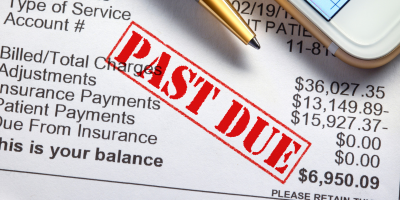The struggle is real…
If you’ve been budgeting for any period of time, it’s likely that you’ve noticed a trend. Specifically, one of the hardest parts of creating a budget and actually sticking to it is setting and keeping a grocery budget.
Am I right?
I’ve personally found it to be true, not only in my own life but in the lives of those around me. In fact, over the past three weeks, I had a significant number of people notice a Facebook post in which I discussed only having a $100 per week food budget for my family of four. The thing is, I received so many private messages with questions about how I might help others do the same.
How to Survive a $100 Grocery Budget
Due to high demand, I’ve decided to give you some insight into how my grocery budget and meal planning system works, and some tips as to how you might implement it in your own life. (Also, this is a good reason why, if you have something you want to hear about on the blog, make sure to reach out! I do respond and I’m always eager to share what I know!)
Part 1: The Grocery Budget
As I mentioned before, our grocery budget for our family of four is $100 per week. When we have other people staying with us, I increase the grocery budget by $25 per person. I’m hopeful that amount might give those of you with larger families a bit of an idea of how to manipulate this budget to work for you.
NOTE: I do not include household products (cleaning supplies, laundry detergent, plastic bags, foil, etc.) in my grocery budget. The grocery budget is for food and food only.
Part 2: The Weekly Menu
Planning ahead is critical if you plan to keep your budget. For us, that planning starts with creating a weekly menu. If you choose to shop biweekly, then this would be a great time to create a menu covering a two-week timeframe.
Don’t worry, I’ve included our own menu below so that you can get a good idea of all the things I plan for.
Before we get to the menu itself, though, I need to fill you in on a few things.
Tip: Grab my FREE Meal Plan Worksheet to help you get started! Find it HERE.
Our Breakfast Routine
One of the things our family has done to cut back on food expenses is to go to a consistent breakfast schedule. Each day my family eats oatmeal with brown sugar and cinnamon on it, alongside large glasses of milk or almond milk (for the dairy-free folks). They have the option to put walnuts in their oatmeal as well but, for the most part, they choose not to. Due to my own dietary restrictions, I have a green protein smoothie each morning with spinach, mixed berries, almond milk, and meal replacement powder.
Occasionally, if we know we have a little extra in the budget or are interested in substituting for another item, Justin and the girls will pick out a box of cereal to split. Ultimately, they always come back to oatmeal because it’s cheaper and keeps them full for a longer period of time.
But what about eggs and pancakes and bacon, you ask? Don’t worry, we incorporate those into occasional dinner meals (and sometimes even lunches). It’s just plain easier (and cheaper) to have a simple breakfast during our already busy mornings.
The Lunch Options
When I started working full-time about four years ago, we decided to make the concept of creating lunches simple enough so the girls could do it themselves (with supervision, of course). Each day they take a sandwich (or leftovers if there are enough), a serving of chips or crackers, and a piece of fruit (we normally stick to apples and bananas). In addition to that, they add an applesauce cup or a yogurt pouch for their “snack”.
We purchase all of the “snack-type” items in bulk and when we run out of one, they get the opportunity to pick the next one to replace the chips or crackers from the last purchase cycle. Some of their favorites include veggie straws, animal crackers, and potato chips, although we have been known to try other things as well.
Organization Tips:
In our home, we have a separate area (and large clear tub) for lunch items such as chips, crackers, and applesauce containers. Those items are only used for lunchtime purposes and are not accessed at other times. This keeps us from running out of any lunch items before the week/month is over.
We purchase Yogurt pouches from Costco and immediately place them into their own drawer in the freezer. Not only do they stay cold until they get to lunchtime, but they act as a cold pack for any other refrigerated food.
Our One-Week Meal Plan
With all of that in mind, you can get an idea of what we eat each week.
We start with one much larger meal toward the beginning of the week to ensure that there are plenty of leftovers for lunches and at least one more meal that week. This week, our go-to large meal just happens to be a turkey.
Note: My husband and I struggle to a great degree with having sugary or junk food-type items in the house. For that reason, we started having “different” types of foods for dessert. Now, we tend to incorporate dill pickles (a true favorite) or some air-popped corn as a dessert item if there isn’t anything sweet in the house at the time. Right now, thanks to the Christmas leftovers, we have a bunch of cookies in the freezer. Thankfully, they are not gluten-free so I’m not tempted!
Part 3: Creating the List
Once the meal plan is in place, the next critical step is to make sure that the grocery list is complete. I cannot say it enough: if you don’t make a list and stick to it, you might as well kiss that budget goodbye.
Take the time to go through your pantry, fridge, and freezer and ensure you don’t already have items to make meals on your list. Then make a thorough list of all the items you need.
Tip: Grab my FREE grocery list templates HERE.
Part 4: The Grocery Run
It doesn’t matter WHERE you shop, so much as the fact that you HAVE your list in hand and will STICK TO IT. I know, I know…it might feel like I’m yelling at you a bit, but really I’m just passionate about the fact that, if you don’t stick to that list, all of your careful planning up to this point will have been a waste of time.
You don’t like to waste time, right?
Then don’t. Stick to the list. In fact, see my YouTube video on that very topic (and how to make it work for you).
With these tips, there shouldn’t be any reason for you to spend more than you planned, right?
Each week I split my grocery list into two different lists: bulk grocery purchases and regular weekly groceries.
Bulk Grocery Purchases
If you missed my recent post on Bulk Grocery Purchases take the time now to check it out (you can find it HERE). Trust me, you’ll be so happy you did!
Using that strategy, I include the items in this current weekly meal plan on my bulk grocery list. I also include the (average) prices for each item and then split them by the number of weeks those items will be used. You could also choose to track the prices (exact or rounded) of each item as you work your way through the grocery store.
You can see that, after breaking the cost of these items by week, we will spend $14.50 this week on bulk grocery purchases.
Tip: Want your own printable list to do the same? You can grab it HERE.
Regular Groceries
This list includes anything I will purchase just for the week (and the corresponding meal plan).
I’ve gone ahead and put the average price we pay for each item so that you can see what we will spend on those items. Obviously, minor adjustments will be made, but this is very close to actual. Knowing that I’ve already spent $14.50 on bulk food purchases, I know that my regular grocery expenditures will need to stay under $85.50 for the week.
You can see that IF WE STICK TO THE LIST we will spend $79.00 on weekly groceries.
Note: I am Celiac and have to be gluten-free, so for that reason, we don’t choose to incorporate buns as part of our hamburger meals. Of course, if you prefer to have them with your meals, this would be a great place to add them in. Just make sure they don’t put you over budget!
Part 5: Re-Evaluating the Expenses
Now that we’ve completed our grocery shopping, I make sure to add up not only our regular grocery purchases but the amount that we spent (per week) on bulk purchases. If I’ve followed all of the above steps, the total amount should come in under the $100 total I have budgeted for the week.
In this case, I’ve left all of the applicable items on the grocery lists, without a few of the staples such as garlic or brown sugar, so that you can see what a typical grocery run would look like if I needed all of the items on the list. I know that, in reality, I have some of these things in my cupboard, so the savings may be greater than the $6.50 noted on my list. Knowing that, I can do one of the following three things:
#1 – Save that money and add it to my savings challenge
#2 – Spend that money on an extra bulk food item or staple we might be missing (i.e. lunch snacks, olive oil, spices, soy sauce, etc.)
#3 – Do a combination of #1 and #2
Typically, I go with the third option. If I can look through my cupboards and note that we are fully stocked on ALL of the basics (I try not to over-purchase), then I’ll save it completely, but knowing that prices might rise for food items and next month might come with additional expenses, I do my best not to run out of everything at once.
Note: It’s good to have a running list of things you are getting low on but might not need immediately.
Struggle for Success
I’d need to be completely honest with you. If you’ve been spending a lot more than this amount each and every week, this process will take time to hone. Justin and I had to learn the hard way, during a time in which, if we’d spent more than $100 that week (or sometimes even that month) on food, we would have had to deal with overdraft fees and late payments. So, don’t lose your momentum if it doesn’t happen the “right way” the first time. Keep trying and you’ll get there!
Tip: If you are still struggling with your budget (grocery or otherwise), the Blessed Budget Planner is designed with you in mind. Check it out HERE.




